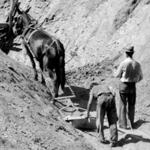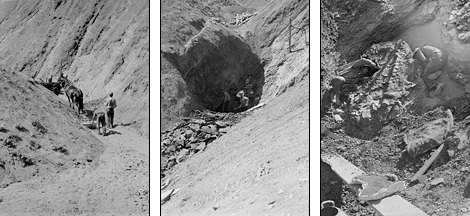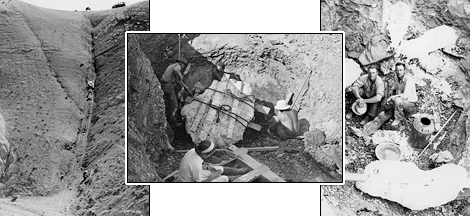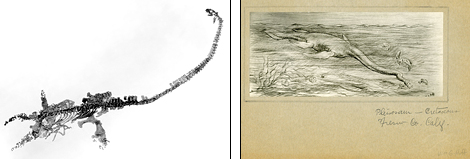 This semester, one of the foci of the CLIR/UCMP Archive Project has been cataloging what are called “supplemental locality files.” These files contain materials (other than field notes) that are relevant to UCMP collections, such as polaroid pictures of fossil sites, letters of correspondence involving UCMP scientists, and environmental impact reports for land development proposed in areas with known fossil sites. As such, they are unique records of how collections came to be, and how collections have since been used for research, education, and protection of paleontological resources on public lands.
This semester, one of the foci of the CLIR/UCMP Archive Project has been cataloging what are called “supplemental locality files.” These files contain materials (other than field notes) that are relevant to UCMP collections, such as polaroid pictures of fossil sites, letters of correspondence involving UCMP scientists, and environmental impact reports for land development proposed in areas with known fossil sites. As such, they are unique records of how collections came to be, and how collections have since been used for research, education, and protection of paleontological resources on public lands.
My work on the project is (1) to improve the preservation of these materials by rehousing them in archival-quality containers and (2) to make entries in the UCMP collections database to link the archive and collections records. The latter makes it possible for anyone interested in, say, the holotype of Cretaceous plesiosaur Hydrotherosaurus alexandrae to look up what archival materials exist in the museum that are related to the specimen (by following the “Link to Archives” in the specimen record or administrative locality record; alternatively, the search function of the Archon database can be used).
In this example, the supplemental locality file includes photographs (below) and corresponding negatives of the excavation site taken in 1937, photographs of prepared specimens, William Gordon Huff’s reconstruction of the animal, and type-written captions for the photographs that were perhaps prepared for an exhibit. When combined with field notes, pictures of excavation sites like these often carry important information on how skeletal remains were buried, which in turn can provide insights into the habits and habitats of long-extinct animals (learn more about this topic). Beyond their scientific values, these pictures preserve vivid images of field work in the early 20th Century, enticing those of us who study paleontology today to ponder on the history of the discipline and personal development of yesterday’s workers whom we hold in high esteem (read about Samuel P. Welles).
You can see a replica of the Hydrotherosaurus skeleton at the City College of San Francisco.
Stay tuned for more exciting “digs” from the Archive Project!
[Larger versions of the photos below can be seen on CalPhotos.]


